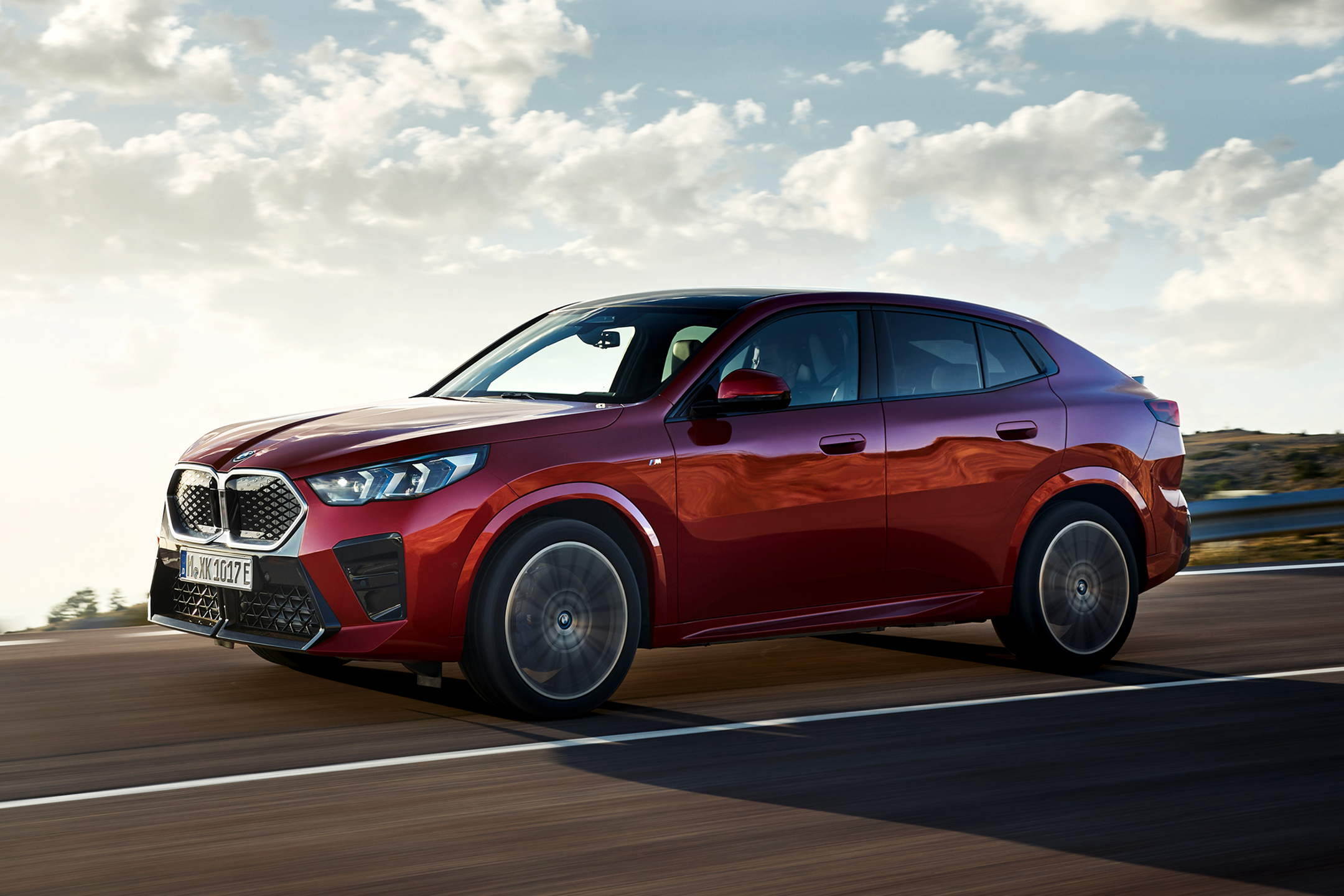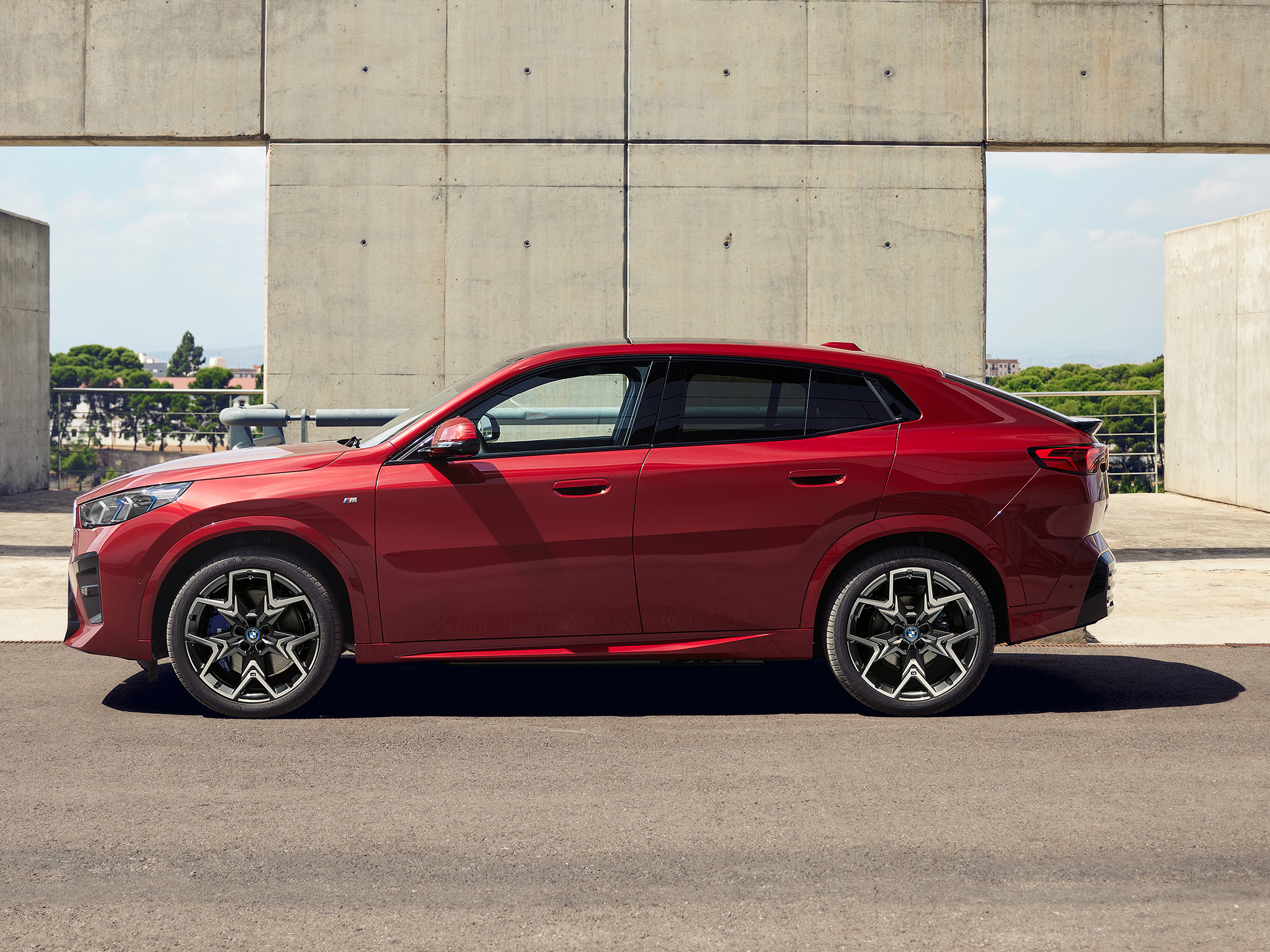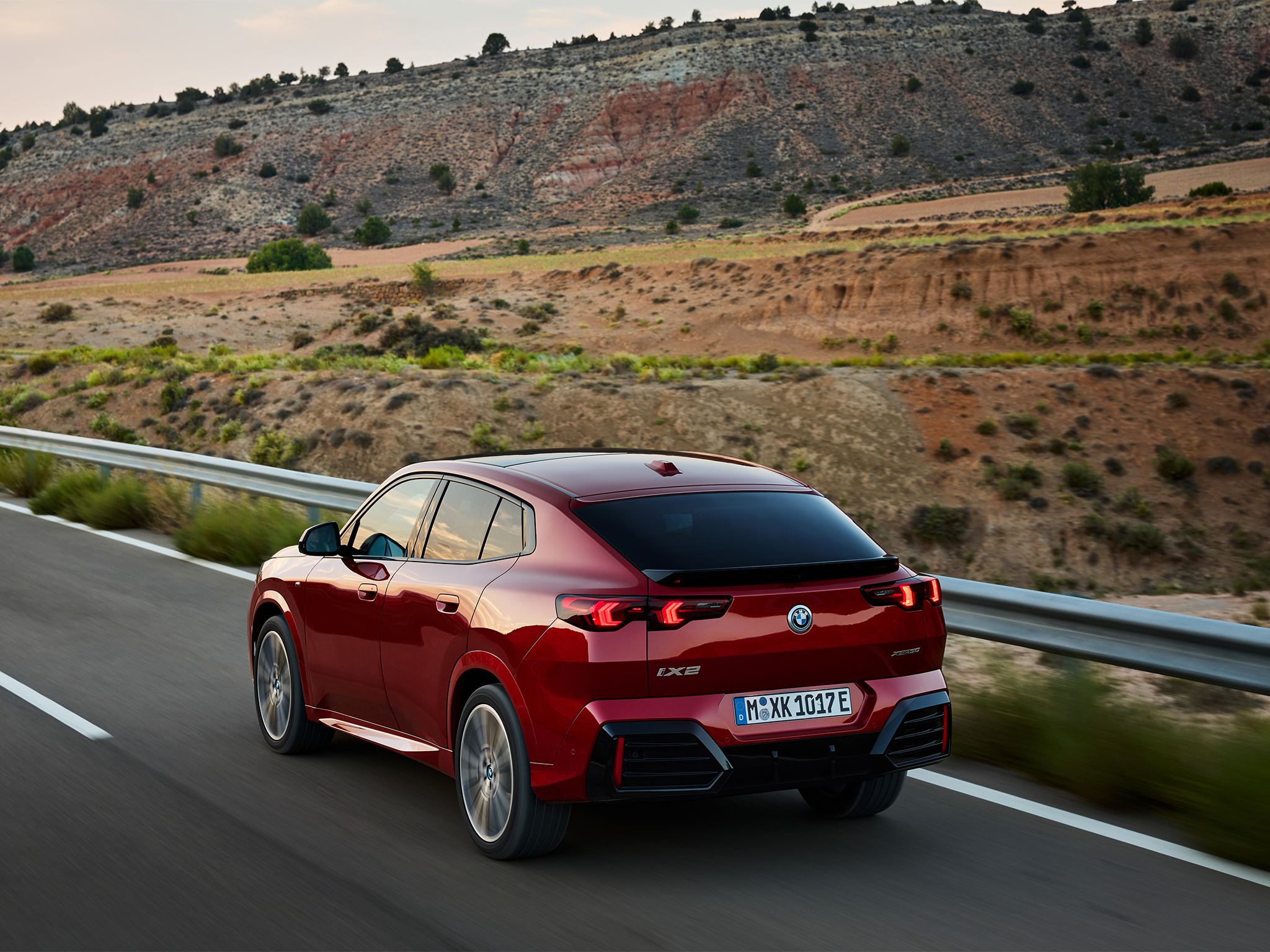BMW iX2 review: Sporty EV with bold styling
The BMW iX2 has bold styling and a sporty electric drive, with a quality feel and decent tech – it’s a shame about the high price and average range figures

The BMW iX2’s strongest qualities are its striking looks, great interior design and overall quality, and a drive that pairs keen performance with responsive handling. It feels sportier than many of its rivals to drive, which should please typical BMW buyers, even if some of that sportiness is an illusion from the firm ride and weighty steering.
BMW hasn’t shied away from offering the tech buyers in this segment expect, but the iX2 falls a little short in perhaps the most important area, that of range. A real-world 200 miles is decent but no more than that, especially given the relatively high price tag and fast charging that doesn’t match the likes of Kia or Tesla, let alone direct rivals like Audi. It may be worth sacrificing the performance of the xDrive30 for the extra range, and lower price tag, of the eDrive20.
How we tested
I spent a day with the xDrive30 version of the iX2 on the roads north of Lisbon in Portugal, on a mix of twisting back roads, sweeping motorways, and through tight village streets – similar to the kind of roads most buyers are likely to experience at some point.
BMW iX2: From £51,615, BMW.co.uk

Independent rating: 7/10
- Pros Bold styling, keen performance, big boot
- Cons Pricey, firm ride, cramped rear seats
BMW iX2 specs:
- Price range £51,615 to £57,445
- Battery size 64.8kWh
- Maximum claimed range 267 to 283 miles
- Miles per kWh 3.7 to 3.9
- Maximum charging rate 130kW
Battery, range, charging, performance and drive
Both eDrive20 and xDrive30 versions of the iX2 use the same 66.5kWh battery pack with 64.8kWh of usable energy. With half the driven wheels the eDrive20 is the more efficient – BMW claims up to 3.9 miles per kWh, to the all-wheel drive car’s 3.7, and that impacts the maximum claimed range, at 283 miles to 267 for the xDrive30.
The advantage our xDrive30 test car has over its two-wheel drive counterpart though is in its extra performance. Where the eDrive has 204PS at its disposal, the xDrive gives you another 50 per cent, with a 306PS output and a claimed 0-62mph time three seconds quicker, at 5.6 seconds. That’s up with the petrol-powered X2 M35i, and the iX2 has the expected all-electric kick to its performance.
It doesn’t feel quite as rampantly fast as some EVs, but it’s smooth and intuitive, and quick enough to be entertaining. It ticks other BMW boxes too, with keen handling, enough grip for most buyers, and excellent stability on the motorway. One tradeoff is a firm ride – though BMW fans may be willing to make this compromise for the car’s sporty image.
Interior, practicality and boot space
The iX2’s cabin is much like the regular X2, and in turn like most other smaller BMWs on sale right now. That’s no bad thing either: BMW doesn’t stray too far down the minimalist route, so it won’t turn off previous BMW owners but it’s sharp enough to not fall behind the flashier layouts of some rivals. Build quality is excellent too, and everything you touch feels high quality.
The driving position is spot on, with a slightly raised seating position for good visibility – forwards, at least. The iX2’s sloping roofline means that a quick glance over your shoulder or in the mirror is mostly greeted by the roof and pillars, rather than glass.
That low roof also means things aren’t quite as pleasant for passengers in the back as those in the front – headroom and legroom are both limited for taller passengers, and it can feel pretty gloomy back there. It’s better for your luggage, which gets 525 litres of space to rattle around in, and makes up for the lack of a ‘frunk’ cargo area under the bonnet.
Technology, stereo and infotainment
Your infotainment interface in the BMW iX2 is a 10.7-inch touchscreen display, incorporated into a curved panel that also houses the 10.25-inch driver information display. As well as touchscreen controls you get a few physical buttons on the steering wheel, and a handful of basics on the ‘floating’ console between the seats, including a volume scroll wheel and track skip.
The touchscreen is relatively easy to use, with clear graphics, quick responses, and a logical layout to the menus, but it’s a shame that centre console doesn’t house BMW’s old iDrive rotary controller, which you could use more readily without glancing at the screen – there’s now a lot more staring and prodding involved in operating maps, music, or car functions. We didn’t try the voice control function, but BMW says it’s improved this for its latest generation infotainment. One feature we do like is the clasp to hold your phone to the wireless charging pad, like the safety bar on a rollercoaster.

Prices and running costs
Judged purely on range and recharging speed the £51k-plus you’ll spend on an iX2 seems a little steep – for the same range as the eDrive20 a Tesla Model Y is more than £6,000 cheaper, while xDrive30 money plus a little more gets a Model Y Performance, which is quicker and goes further. The BMW fights back with a higher feeling of quality and a more engaging drive though, two characteristics that you might be prepared to pay a little more for, and standard equipment is generous too.
Running costs should undercut petrol equivalents by a fair chunk too. Real-world efficiency will likely be less than BMW claims – we saw around 3mi/kWh in mixed driving, pointing to a real-world maximum of just under 200 miles from the xDrive30, but home charging will keep costs down. Insurance groups of 31-38 are similar to an Audi Q4 e-tron, and much lower than a Tesla Model Y or Mercedes EQA.
BMW iX2 rivals
FAQs
How long does it take to charge?
Find a 130kW DC public rapid charger and a 10-80 per cent top-up in ideal conditions takes around 29 minutes. A full charge on an 11kW AC home charger takes 6.5 hours.
How much does it cost – is it worth it?
A starting price of nearly £52,000 seems a little expensive, and around £6k-£7k more than the petrol X2s, but the iX2 should cost less to run.
Does BMW replace batteries for free?
BMW’s standard battery warranty is eight years or 100,000 miles, whichever comes first. This should cover any defects or failures during this period.
Why trust us
Our team of motoring experts have decades of experience driving, reviewing and reporting on the latest EV cars, and our verdicts are reached with every kind of driver in mind. We thoroughly test drive every car we recommend, so you can be sure our verdicts are honest, unbiased and authentic.
The verdict: BMW iX2
The BMW iX2 doesn’t break any new ground among electric cars, and its relatively high price and modest range fall short of several cars in the market. It does feel and drive like a BMW though, while the striking styling (and even more striking colour options) are ideal for those who like to stand out.







Join our commenting forum
Join thought-provoking conversations, follow other Independent readers and see their replies
Comments